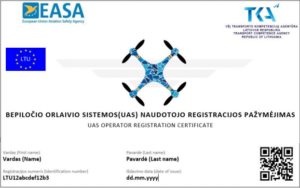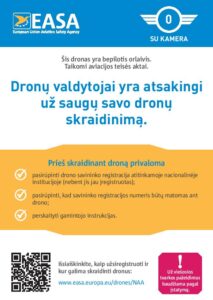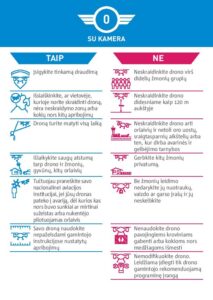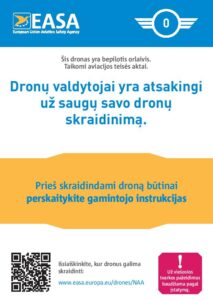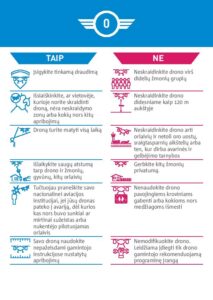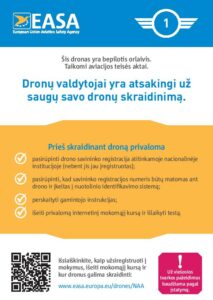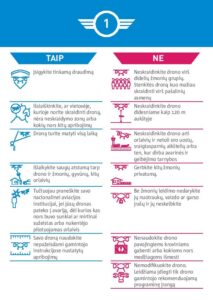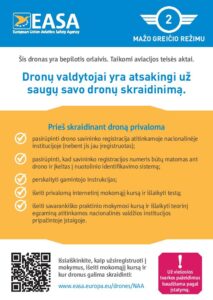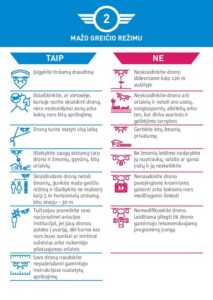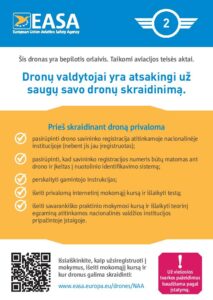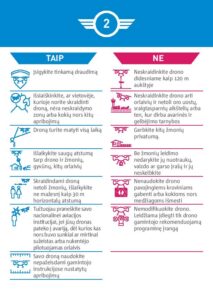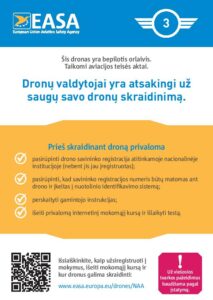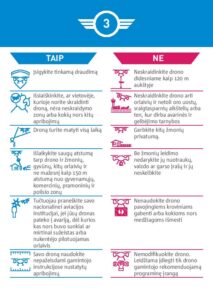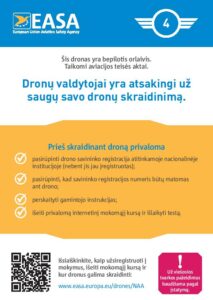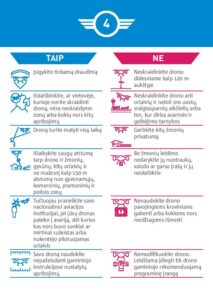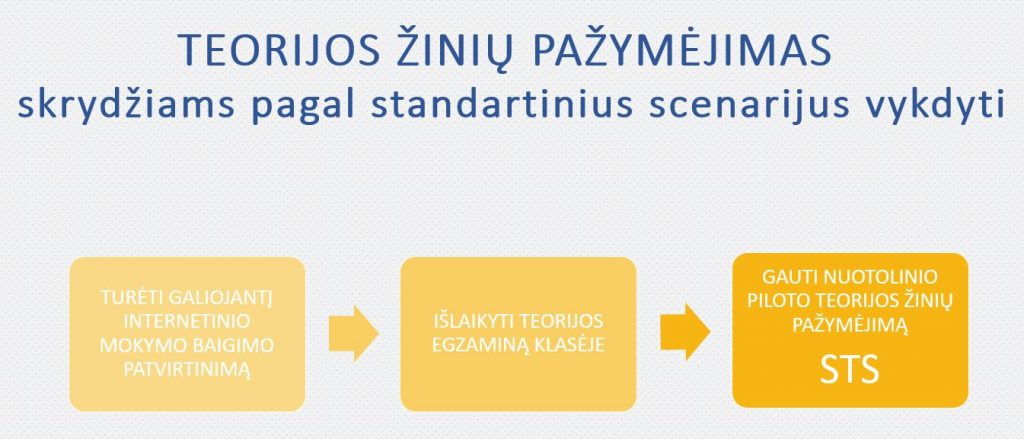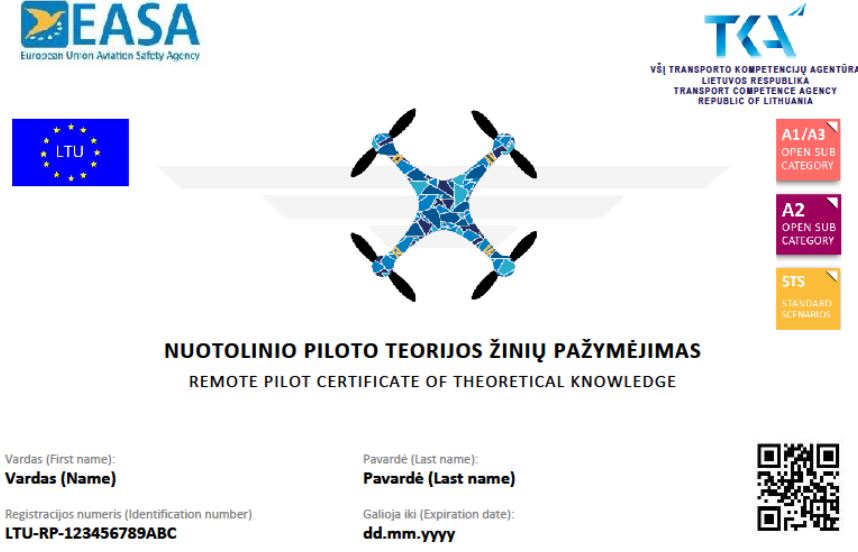| < 250 g (including cargo), electrically driven.
For example, DJI Mavic Mini, DJI Mini 2).
The owner needs to register in the TKA online system, there is no need to take an exam. |
< 900 g (including payload), electrically powered, must be equipped with an immediate remote identification device that should provide the following information in real time: user registration number, serial number of the drone, its geographical position, altitude and take-off location, course of the drone and geographic location of the remote pilot.
For example, the DJI Mavic Air 2.
The owner needs to register in the TKA online system. The pilot has to pass a theoretical knowledge course and pass an online exam. |
< 4kg, (including cargo), must be electrically powered, have a remote identification device attachment.
For example, DJI Mavic 2, DJI Phantom.
The owner needs to register in the TKA online system. The pilot has to pass the theoretical knowledge course and pass the online exam, and after completing the independent practical training, pass the exam in the TKA exam class. |
< 25 kg (including cargo), maximum characteristic dimension must be less than 3 meters, electrically driven. |
< 25 kg (including cargo), but this class has less requirements than C3. It is intended for model drones. |
< 25 kg (including cargo). These aircraft are operated according to standard scenarios.
1) Class C5 must meet all the requirements of Class C3, except that the aircraft’s maximum attainable altitude must be limited to 120 meters and no geo-orientation function is required.
2) Class C6 must meet all the requirements for class C3, except – the maximum height of the aircraft must be limited to 120 meters, no geo-orientation function is required, the unmanned aircraft does not have to be powered only by electricity. |
